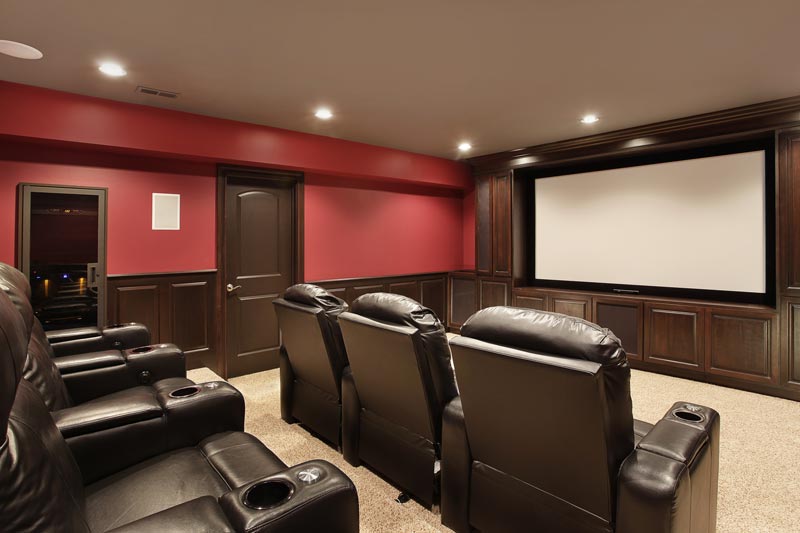Are you tired of paying $12 per movie ticket? Does your jaw drop when you’re charged over $10 for popcorn and a soda?
You’re not alone in these feelings towards the movie box office. Last year, the U.S. movie industry sold the fewest number of movie tickets in 25 years.
In-home theaters are one reason behind the declining box office audience. Americans are opting to design a high-end home theater instead of rounding up the family and spending a fortune at the movies.
Television technology is evolving rapidly regarding size and picture quality. Modern sound systems allow you to recreate the movie environment without leaving the living room.
Read on for a guide to designing the perfect high-end home theater system.
A High-End Home Theater Starts With the Picture
You can’t have a high-end home theater without the right screen. This element is the most critical part of home entertainment.
The display is a significant cost driver and you want to get it right. There are a few considerations to make before investing in anything.
First, are you planning to purchase a flat-screen television or opting for a projection system instead? Projection systems are traditionally more expensive than a standard television and could run up to $15,000. Of course, cost varies based on the size and quality of your choice.
How To Choose Screen Size
Cost is not the only consideration for display size. The complete dimensions of the theater room weigh on the selection process.
You need to have ample real estate on the wall to accommodate the size of the display. Another dimensional consideration is how much space is between your seating and the display.
An easy and wise way to approach this is determining where seating will go before purchasing the display. Next, measure the distance between the seating and the display wall in inches.
THX advises multiplying this distance by a factor of 0.84 to determine the recommended screen size. Therefore, if your seating arrangements are 100 inches from the display, you should purchase an 84-inch screen size.
The Sound System Is Another Critical Element
You cannot recreate the movie theater experience without surround sound. However, purchasing a sound system is the easy part. Designing the room to maximize acoustics is the challenge.
Depending on your budget, consideration should be given to adding acoustic treatments to the theater room. Hard and flat surfaces reflect sound.
A powerful sound system may actually decrease performance or create an echo. The solution could be strategically placed fabric-covered panels to absorb sound.
Lighting Is Equally Important
While there are many legitimate complaints about the movie theater, you will never hear gripes about a glare on the screen. Lighting, or lack thereof, sets the mood in a movie theater.
A finished basement is the best place for an in-home theater because there are limited windows and doors. If the basement is not possible, consider adding motorized shades to the windows for a high-end touch.
Any source of natural light needs to be diminished. Also, eliminate reflective surfaces.
Wrapping It Up
As the technology improves, the popularity of in-home theaters is growing. With the right design, you can recreate the movie theater experience in the convenience of your home.
It’s important to remember that purchasing a great television and sound system doesn’t make a home theater. Strategically designing the placement of these items is imperative. Ancillary equipment is also needed to amplify picture and sound performance.
For more information on designing the perfect high-end home theater, please contact us for assistance.
Michael Helm is a recognized leader in the architectural design and consultation fields. He has more than twenty-four years experience and more than 200 projects to his credit. He has extensive experience with demanding projects and enjoys a high level of success and comfort working with clients, design and construction teams.

